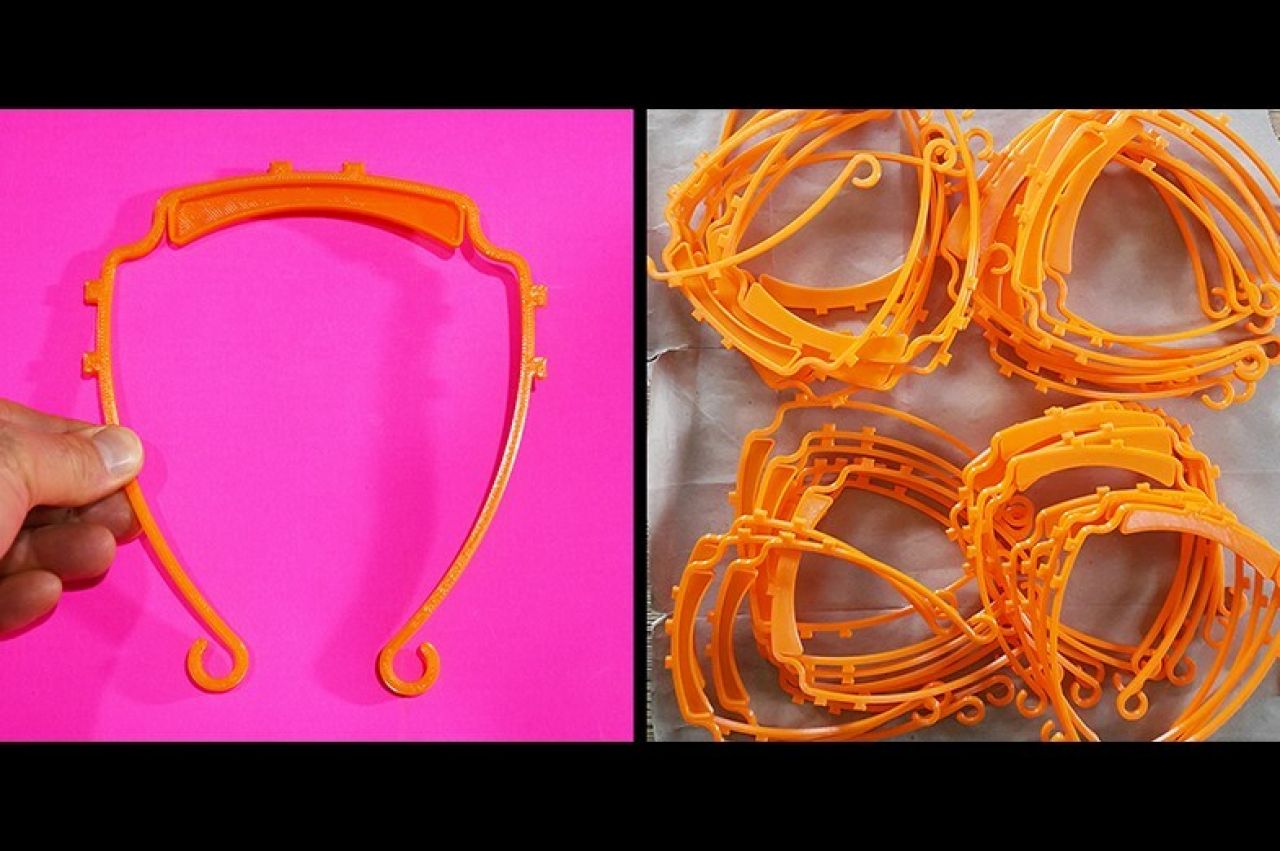April 06, 2020
Stuckeman School professor, students join efforts to 3D print face shields

UNIVERSITY PARK, Pa. – Marcus Shaffer, associate professor of architecture, and two architecture graduate students in the Stuckeman School have joined the efforts of the worldwide additive manufacturing community in 3D printing face shields that could potentially be used by doctors, nurses and healthcare workers, who are on the front line of the COVID-19 pandemic.
Shaffer, along with the husband and wife team of Julio Diarte and Elena Vazquez, who are both doctoral students, are 3D printing the headbands and hand-cutting the shields from transparent sheets from their respective homes in State College. They are using the online guide created by architect Jenny Sabin, which Shaffer found when researching ways he could use 3D printing to help during the pandemic.
Sabin’s lab and the College of Architecture, Art, and Planning at Cornell University – where Sabin is the Arthur L. and Isabel B. Wiesenberger Professor in Architecture – are collaborating with other Cornell departments to address the need for personal protective equipment (PPE) at Weill Cornell Medical Center in an initiative called “Project PPE.”
Shaffer said he was compelled to help because he knows how design enriches all of our lives.
“Many of my friends are artists, designers, architects . . . and this period of isolation has made clear how rich our lives are because we can be productive by making things that are beautiful, useful or both.” – Marcus Shaffer“As a person who spent a significant time of my life as a designer working in New York City, I just felt compelled to turn my tools and machines toward potentially helping that city.” – Marcus Shaffer Having lived in New York during the 9/11 attacks, Shaffer said that the feelings of loss and uncertainty, coupled with the city as a whole coming to a standstill back then, are still fresh in his memory. “When I found Jenny Sabin's website and Project PPE, I turned on the 3D printer in my little factory here at home and it literally has not stopped,” added Shaffer. Diarte, one of Shaffer’s advisees, said he and Vazquez felt compelled to assist with the effort after reading about the MASC initiative at Penn State. “Elena and I borrowed a 3D printer from the FORMAT Lab in the Stuckeman School to continue our research at home, so we figured, ‘why not print some headbands in the downtime when we’re not working?’” explained Diarte. “We take turns at home – one works on their research and the other prints – and then we switch.” As of Thursday, Shaffer, Diarte and Vazquez had printed 70 headbands and the trio expects to print another 100 this week.
